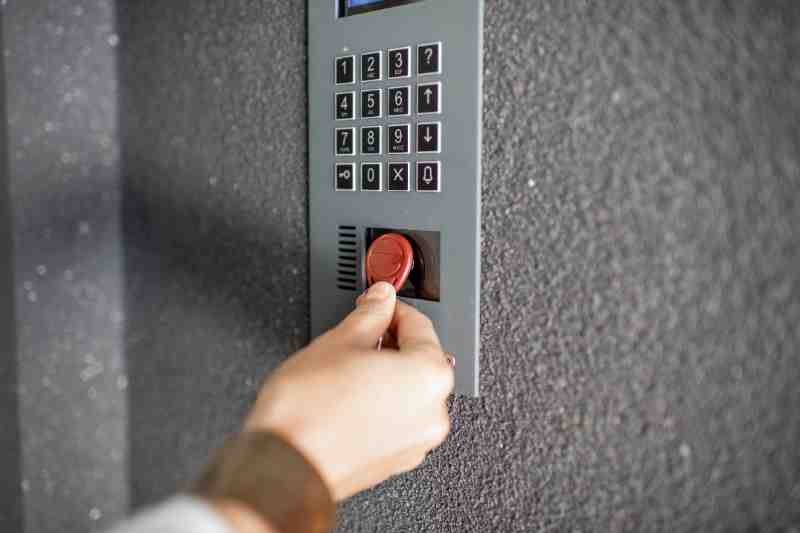Key fobs have become a staple for convenient access to buildings and properties, replacing traditional keys with a simple wave or tap. Their ease of use makes them popular among tenants and property managers alike. However, this convenience comes with a potential security concern: key fob duplication. Understanding how to duplicate a key fob is crucial for both security awareness and practical purposes.
While keyless entry systems offer numerous advantages, the ease with which some key fobs can be copied raises questions about security. In this guide, we will delve into the process of how to duplicate a key fob, explore the implications of key fob cloning, and discuss more secure alternatives for access control.
This guide will cover:
Understanding Key Fobs and Duplication
What is a Key Fob?
A key fob is essentially a small, portable device that utilizes Radio Frequency Identification (RFID) technology to grant access. When presented to a compatible reader, the fob transmits a unique code, unlocking doors, gates, and other secured entry points. Key fobs offer a hands-free and efficient way to manage access, eliminating the need for physical keys. They are favored for their convenience by both residents who appreciate quick entry and property staff who can manage access permissions remotely. This remote management capability simplifies issuing new fobs and revoking access when necessary.
However, the very technology that makes key fobs convenient also contributes to their vulnerability. The RFID technology, while sophisticated, can be susceptible to copying under certain circumstances. Moreover, like any electronic device, key fobs are not without their drawbacks; they can be demagnetized or malfunction, potentially disrupting access.
The Ease of Key Fob Duplication: Step-by-Step
The process of how to duplicate a key fob is surprisingly straightforward, primarily due to the availability of RFID copier devices. Here’s a step-by-step guide on how it’s typically done:
- Acquire an RFID Copier: The first step in how to duplicate a key fob is to obtain an RFID copier. These devices are readily available online and are designed to read and write RFID data. Most are user-friendly, featuring simple controls like “Read” and “Write” buttons.
- Initiate the Reading Process: Turn on the RFID copier and select the “Read” function. Hold the key fob you intend to copy close to the copier’s scanner. The reading range is usually quite short, typically within an inch or two. Activate the “Read” button. The copier will then scan and capture the RFID frequency and data stored on the original fob. A beep or light usually indicates successful data capture.
- Prepare a Blank Key Fob: Once the original fob’s data is read, replace it with a blank RFID tag or fob. These blank fobs are inexpensive and widely accessible online. Ensure the blank fob is compatible with the RFID copier you are using.
- Write Data to the Blank Fob: With the blank fob in place, press the “Write” button on the RFID copier. This action transfers the data previously read from the original key fob onto the blank one. Again, a beep or flash usually confirms a successful data write.
- Test the Duplicated Key Fob: The final step in how to duplicate a key fob is to test the newly created copy. Attempt to use it at the intended access point, such as a building entrance or elevator. If the duplication was successful, the new key fob will function identically to the original.
Important Note: While the process of how to duplicate a key fob may seem simple, it’s crucial to understand the type of key fob you are dealing with. Many modern key fob systems, especially those used in secure residential and commercial buildings, utilize encrypted fobs that are significantly harder, if not impossible, to copy with generic RFID copiers. For these encrypted systems, unauthorized duplication is generally not feasible.
Pro Tip: Be cautious about using generic key fob copiers, especially for security-sensitive applications. For encrypted key fobs, it’s advisable to consult with the system manufacturer or an authorized dealer to obtain legitimate duplicates. Unauthorized copying attempts on encrypted systems are unlikely to succeed and may even trigger security alerts.
Key Fob Alternatives: Embracing Mobile Access Control
Can You Copy a Key Fob to Your Phone?
Directly copying a traditional key fob’s signal to a smartphone is not possible. Smartphones and standard key fobs operate on different technological principles. While phones have NFC (Near Field Communication) capabilities, which is a subset of RFID, they are not inherently designed to mimic or duplicate the specific RFID protocols used by most key fobs.
One workaround sometimes suggested is using an RFID sticker. These stickers can be programmed with the same data as a key fob and then attached to a phone. However, this is still not a direct fob-to-phone copy.
The Rise of Mobile Access Control
A more advanced and secure alternative to key fobs is mobile access control. These systems leverage smartphone technology directly, turning your mobile device into a digital key. Instead of relying on RFID duplication, mobile access control systems offer a fundamentally different approach to building entry.
Leading systems like ButterflyMX utilize smartphone apps to grant access. Users can open doors and gates simply by using their smartphone. This method not only eliminates the need for physical fobs but also enhances security and convenience in several ways:
- Enhanced Security: Mobile access control systems often incorporate encryption and dynamic codes, making them significantly more resistant to cloning and unauthorized duplication compared to traditional RFID key fobs.
- Remote Management: Property managers can remotely issue, revoke, and manage access permissions directly through a web-based dashboard or management app. This reduces administrative overhead and improves security control.
- Audit Trails: Every access event is logged, providing a detailed audit trail. This enhances accountability and security monitoring.
- Convenience and Multifunctionality: Smartphones are devices people always carry. Using them for access control adds convenience and reduces the number of physical items to manage. Modern systems often integrate with video intercoms and other building management features, offering a unified platform.
Learn more about modern access solutions and how they surpass traditional key fobs.
Key Fob Duplication: Frequently Asked Questions
Is Copying Key Fobs Illegal?
Generally, how to duplicate a key fob for your own use, or for authorized tenants if you are a property manager, is not illegal. However, ethical and security considerations are paramount. Creating unauthorized copies to gain access to property you are not permitted to enter is illegal and carries potential penalties. While the act of copying itself might not be unlawful, using a duplicated fob for illicit access certainly is.
How Much Does it Cost to Duplicate a Key Fob?
The cost to duplicate a key fob varies widely depending on several factors:
- Type of Fob: Basic, unencrypted fobs are cheaper to copy. Encrypted fobs, if duplicable at all, will be significantly more expensive due to the specialized equipment or services required.
- Service Provider: DIY RFID copiers are relatively inexpensive upfront, but may not work for all fob types. Professional locksmiths or key fob copying services will charge more, with prices ranging from $150 to $500 or even higher, especially for encrypted fobs.
- Location: Pricing can vary based on geographic location and local service rates.
Can a Locksmith Duplicate a Key Fob?
Yes, some locksmiths offer key fob duplication services, especially those specializing in modern security systems. However, not all locksmiths have the necessary equipment for all types of key fobs, particularly encrypted ones. It’s advisable to inquire specifically if a locksmith can duplicate your type of key fob before visiting.
Are Key Fobs Programmed?
Yes, key fobs are programmed with unique identification codes during manufacturing. This programming is what allows the access control system to recognize and grant entry to authorized fobs. The level of programming and encryption varies among different systems, affecting their security and duplicability.
RFID vs. NFC Key Fobs: What’s the Difference?
While both RFID and NFC (Near Field Communication) technologies are used in key fobs, NFC is a specialized subset of RFID. The primary difference lies in communication capabilities:
- RFID: Typically operates on one-way communication. The fob transmits its ID to the reader.
- NFC: Supports two-way communication. NFC fobs can both transmit and receive data, allowing for more complex interactions and data storage. NFC generally operates at a shorter range than RFID and is often used for contactless payments and data exchange in addition to access control.
Conclusion: Secure Your Access Control
Understanding how to duplicate a key fob is essential for recognizing both the convenience and potential vulnerabilities of this access method. While key fobs offer ease of use, the risk of cloning, especially for unencrypted versions, is a valid security concern.
For enhanced security and future-proof access control, consider transitioning to mobile access control systems. Solutions like ButterflyMX provide a more secure, manageable, and user-friendly alternative to traditional key fobs, leveraging the power of smartphones for seamless and protected property access. By embracing modern technologies, property owners and managers can offer superior security and convenience in the evolving landscape of access control.

